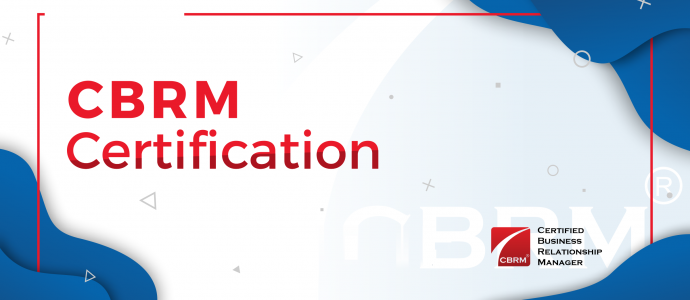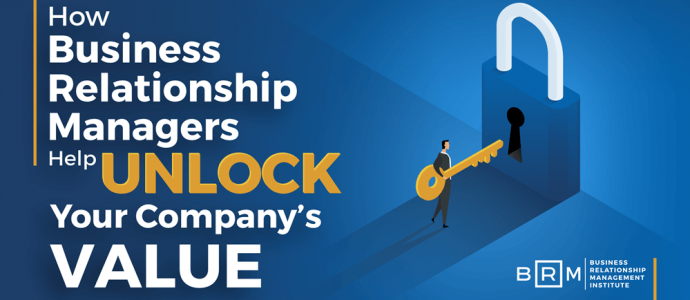BRM Capability
A business relationship management capability is everything it takes, both visible and invisible, to nurture relationships in an organization. Examples of visible components are meetings, artifacts, and professional development, while examples of invisible components are knowledge learned, experience gained, trust, and confidence-building. Used effectively, these components build the endless reserve of energy necessary to evolve culture, build partnerships, drive value, and satisfy purpose.
The business relationship management capability facilitates culture advancement, driving it to one of trust, creativity, innovation, authenticity, and shared ownership across the organization. A mature business relationship management capability converges cross-functional teams to create holistic strategies that deliver organizational value and meaningful results.
Click here to learn more on: BRM Capability Defined | BRM Capability Success
From Tool to Teammate: How GenAI is Changing the BRM Landscape
I didn’t realize it at first, but somewhere along the way, GenAI started filling a quiet but meaningful role — not just answering questions, but offering presence. On long nights when I was stuck on an idea, it became the brainstorming partner I could count on. When I felt overwhelmed, it helped me organize my thoughts. It’s not human, of course — but the rhythm of conversation, the space to reflect, and the lack of judgment made it feel different from any other tool I’d used.
Our Favorite Tips for Strategic Thinking
BRMs who think strategically don’t just push IT initiatives—they frame everything in terms of business value. Whether it’s improving customer experience, increasing revenue, or optimizing operations, they ensure that every decision ties back to measurable impact.
BRM Coaching: Solutions Crafted for Success
Delivering expertise tailored to your unique needs, crafting solutions designed for your success. Your goals become our mission as we offer insightful strategies to yield impactful results for your organization. BRM Institute’s BRM Coaching and Consulting helps you navigate the future with confidence.
The Power Duo: How BRM and ITIL Collaborate to Drive Value
So, when thinking of Service Management, think of Cola because ITIL is the biggest and best-known soft drink brand. Usually when people ask for ‘a coke,’ what they mean to say is ‘they want a cola. Similarly, most people talk of ITIL when they really mean ‘excellent customer services.’ Before we delve further, let’s first dispel a certain myth – ITIL is about IT. This is false, though it was true in the 1980s/90s when ITIL first emerged as the Information Technology Infrastructure Library, but since then, technology (IT) has pervaded every aspect of consumerism and business interfaces.
The Value of Business Relationship Management: Insights from Mayo Clinic’s Leadership
As organizations increasingly explore the potential of Business Relationship Management (BRM), many CIOs find themselves grappling with how to justify what appears to be an added cost in an era of stringent cost management. Neal Sanger, a key member of Mayo Clinic’s CIO executive leadership team, sheds light on how CIOs can effectively rationalize the BRM capability. According to Sanger, it’s crucial for CIOs to frame BRM not merely as an additional expense, but as a strategic investment that enhances organizational convergence, optimizes resource utilization, and drives innovation.
Empowering Municipalities through Strategic Business Relationship Management
Municipalities today face a myriad of challenges that hinder their ability to drive meaningful transformation and deliver value to their communities. From transformation spending that fails to bring about real change to a non-collaborative culture and functional silos, the obstacles are numerous and complex. In this context, the role of Business Relationship Management (BRM) becomes critical. Misunderstanding business needs is a common plight. Inadequate stakeholder engagement creates a disconnect between the solutions delivered and the community’s actual requirements. This gap is particularly problematic without a framework for value recognition. Without metrics and frameworks to measure and demonstrate the value of initiatives, it becomes challenging to justify investments and sustain stakeholder support.
Evolve Your Culture of Collaboration With Business Relationship Management
The BRM capability assumes responsibility for diligently overseeing the continual enhancement of the quantity and caliber of impactful work relationships. This proactive approach contributes to the ongoing evolution of a collaborative culture, fostering an environment that consistently amplifies the inclination to collaboratively shape valuable outcomes. While a shift in purpose undoubtedly drove change, the primary catalyst for Microsoft’s remarkable resurgence lies in overhauling its corporate culture, realigned to support its newly articulated mission and address latent needs. The core of this strategic shift was moving away from a competitive, zero-sum-game approach where one’s gain is another’s loss.
How Using Business Relationship Management Helps Build Partnerships
Building partnerships means cultivating and advancing positive relationships characterized by shared ownership of risks, responsibilities and resources and a shared goal of achieving successful, impactful outcomes. Every organization has an intricate web of working relationships – some of which stand out as exceptional, genuine partnerships that resonate with each person involved. In this installment of our blog series on the basics and benefits of BRM, we’ll explore the importance of cultivating high-quality partnerships, the mindset required to build them, and a framework to help organizations nurture and mature these partnerships.
How to Become a Security Champion: a CISO’s Perspective
CISOs and security teams are not about compliance only. We’re here to enhance protection, strengthen business resilience, and enable business. We’re here as an advisor to business on enterprise risks, and we want to be the partner, supporter, and enabler for the business. We have a common goal as the business even though we come from different angles. I hope you see that too, and I hope to see more BRMs become our security champions!
Exploring the Evolution of the CBRM Certification Course
The newest Evolved CBRM signifies a shift towards a more integrated, strategic, and holistic approach to Business Relationship Management. The original CBRM focused on the tactical aspects of value management and innovation within business relationships. In contrast, the Evolved CBRM broadens the scope to include a deeper understanding of organizational purpose, energy, and how to influence intentional positive change that ensures results.
Breaking Silos with Beats: Spotify’s Tribe Framework in Facilitating Cross-Functional Business Relationships -Part 1
In the symphony of modern business, where each department plays a distinct tune, it’s crucial for business and IT executives and senior leaders to conduct an orchestra that harmonizes these tunes into a coherent melody. The Tribe Framework, popularized by Spotify, offers a rhythm to break silos and enhance cross-functional business relationships. In part one of this article, we will explore the members of the Tribe, while part two will explore the application of the methodology.
How Business Relationship Managers Help Unlock Your Company’s Value
In part two of this four-part series, we covered the basics of business relationship management and described how this framework acts as a capability, discipline and role to evolve culture, build partnerships, drive value and satisfy purpose. In this article, we’ll break down how the role of a business relationship manager applies the capability to identify and deliver value within your organization – and why doing so is important.
What is Business Relationship Management and How Can it Help Your Organization?
Many organizations don’t have a centralized approach to achieving business value, causing divisions in culture, workplace silos and waste. According to The Harvard Business Review, when specialists work together across the boundaries of their expertise, their firms earn higher margins, inspire greater client loyalty and gain a competitive edge. But how can you combat the constant threat of fragmentation through growth and disruption? Many businesses are turning to business relationship management (BRM), a core competency offering a holistic, people-centric solution. As an example of how you can successfully apply BRM as a capability to acknowledge and respond to business challenges, we’ll look at the Honda Manufacturing of Alabama (HMA) facility.
A Day in the Life of a Business Relationship Manager: Bridging the Gap
Without the BRM capability, organizations often face significant challenges. Miscommunication between IT and business units can lead to misaligned priorities, reactive IT service management, and business partners struggling to navigate IT services effectively. The presence of a BRM changes this dynamic by fostering proactive communication, aligning IT initiatives with business objectives, and ensuring that both sides work collaboratively towards shared goals.
Protecting Against Cybercrime: Advancing Security Through Business Relationship Management
In essence, a strategic BRM capability can facilitate collaboration between the CISO and other parts of the organization. It helps in translating security priorities into business value and impact, building relationships, and ensuring that security is integrated into the organizational culture and decision-making processes. This collaborative approach can enhance the CISO’s ability to address the mentioned challenges and create a more security-conscious and resilient organization.
A Practical Guide to Your Certification Journey: BRMP, CBRM, and MBRM
Professionals in the field of Business Relationship Management (BRM) are seeking ways to equip themselves with the skills and knowledge necessary to drive value, enhance collaboration, and foster innovation within their organizations. This quest for excellence often involves pursuing certifications such as BRMP, CBRM, and MBRM. In this article, we will explore the key differences between these certifications, highlight their unique benefits, and provide guidance on how to achieve them.
A BRM Digitalization Strategy that Delivers Results Through Business Partnering
When building a digital strategy, common pitfalls are easily overcome by realizing that digital leadership comes from many places inside your organization. Get started with your BRM capability and a cross-organizational Digital Council.
How to Re-Establish the Relationship Between Business Partners and Technology
Relationships are strengthened when we demonstrate that what we say we are going to do is done, when we manage to gain the trust of our business partners because we work in such a way that we achieve the strategic objectives of the organization. When we understand that we all share ownership for the success or failure of the organization and we help each other to achieve our objectives.

















